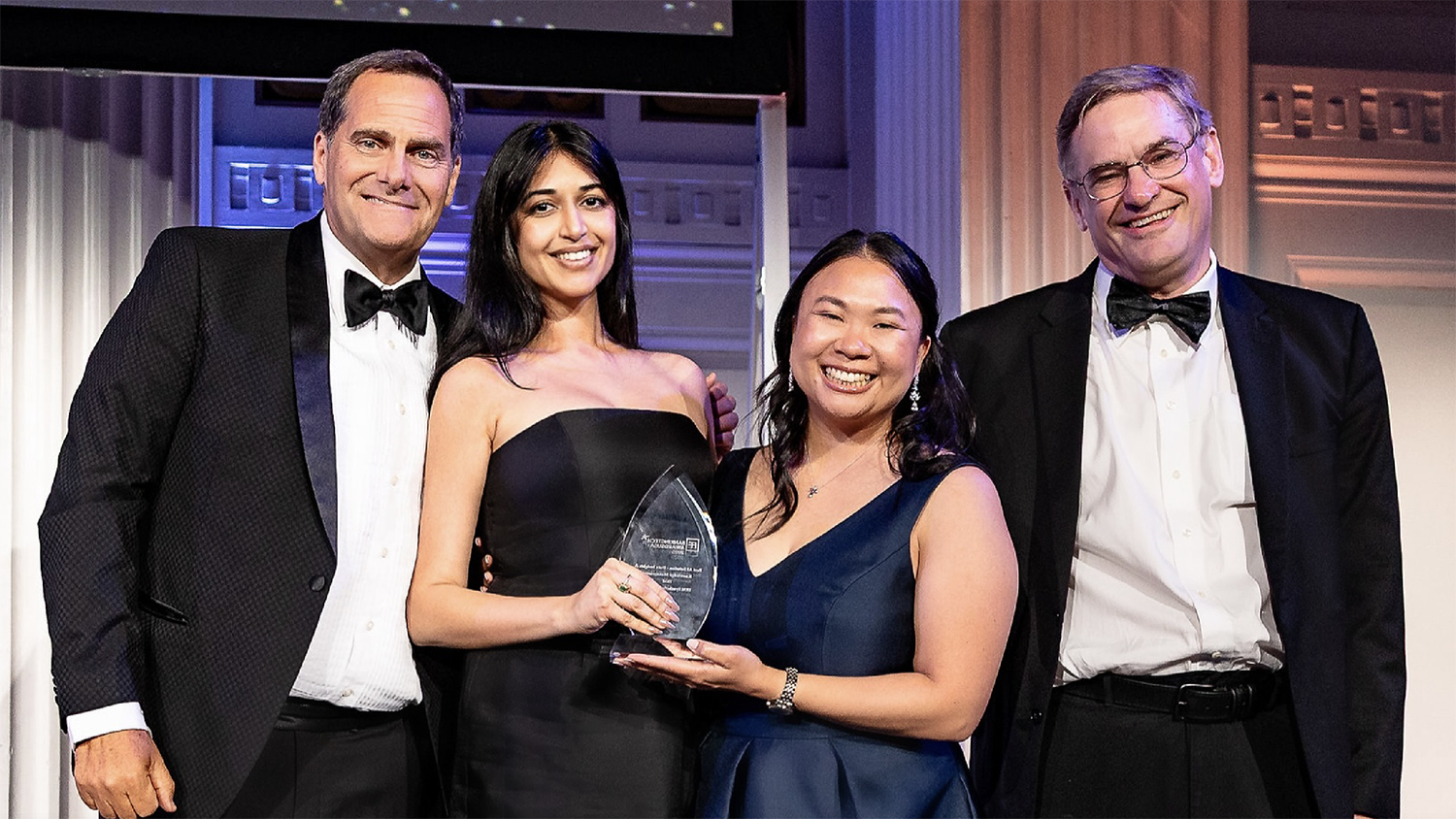Graduate Student Research Symposium Winners
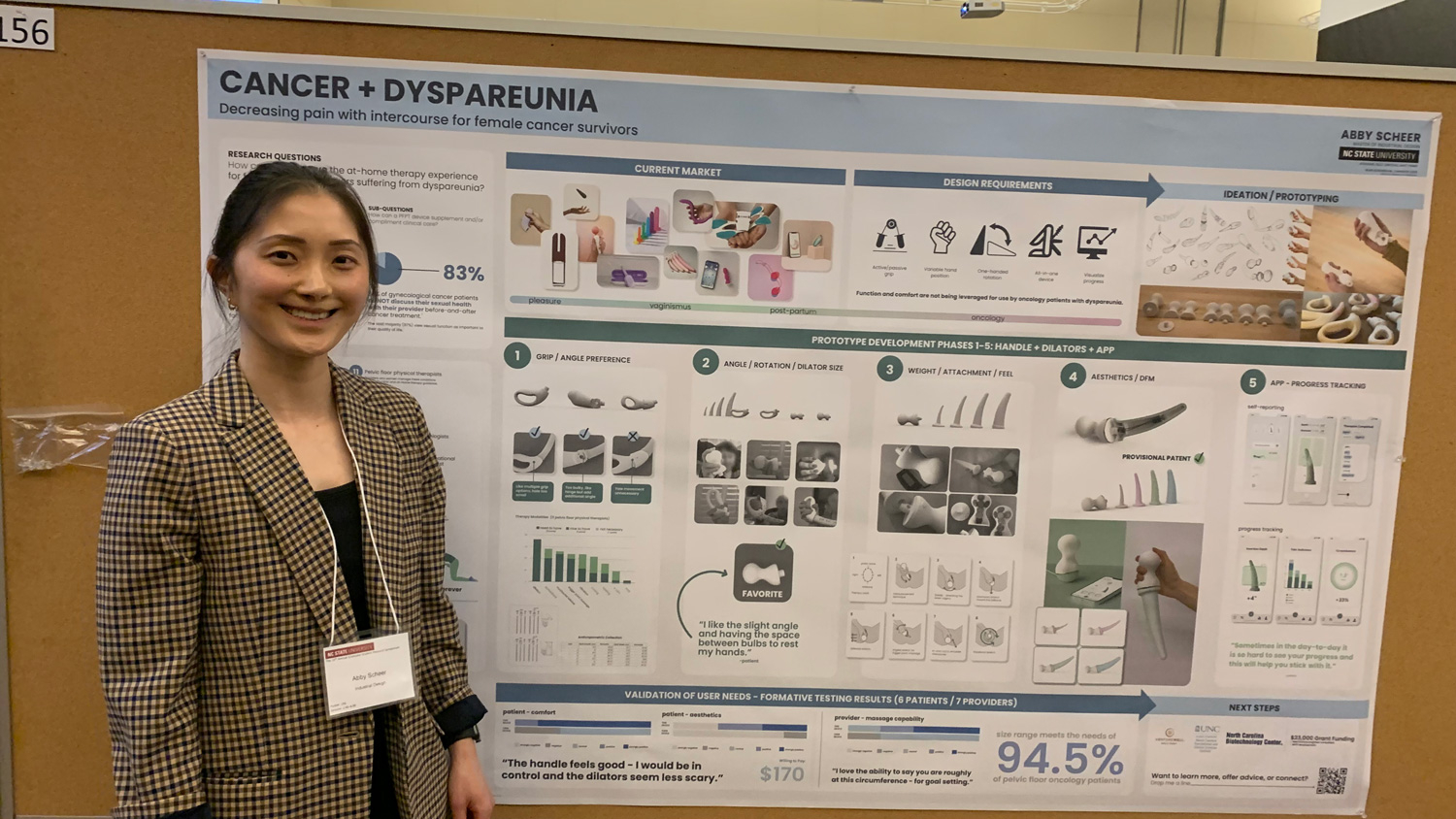
Nearly 200 NC State graduate students presented their research projects this week at the 15th annual Graduate Student Research Symposium, and 27 were recognized as the best presenters in their disciplines. Posters are judged by faculty, and students receive recognition for top posters. The goals are to showcase the outstanding quality and diversity of graduate-level research at NC State, in addition to providing students with the opportunity to practice and enhance their communication skills with those outside of their discipline.
The research symposium, organized by NC State’s Graduate School and the Graduate Student Association, provides students the opportunity to exhibit their research posters. Judges in each discipline evaluate students on 1) the quality of their research, 2) how well the information was presented in poster form, 3) oral communication about the poster, and 4) creativity and aesthetic qualities of the poster.
College of Design Winners:
Three students from the College of Design were recognized for their poster presentations and research.
First Place Winner: Abby Scheer
Participants: Abby Scheer, Alan Rosenbaum, Chandler Sizer
Graduate Programs: Industrial Design; Biomedical Engineering
Advisors: Kelly Umstead and Matt Penny
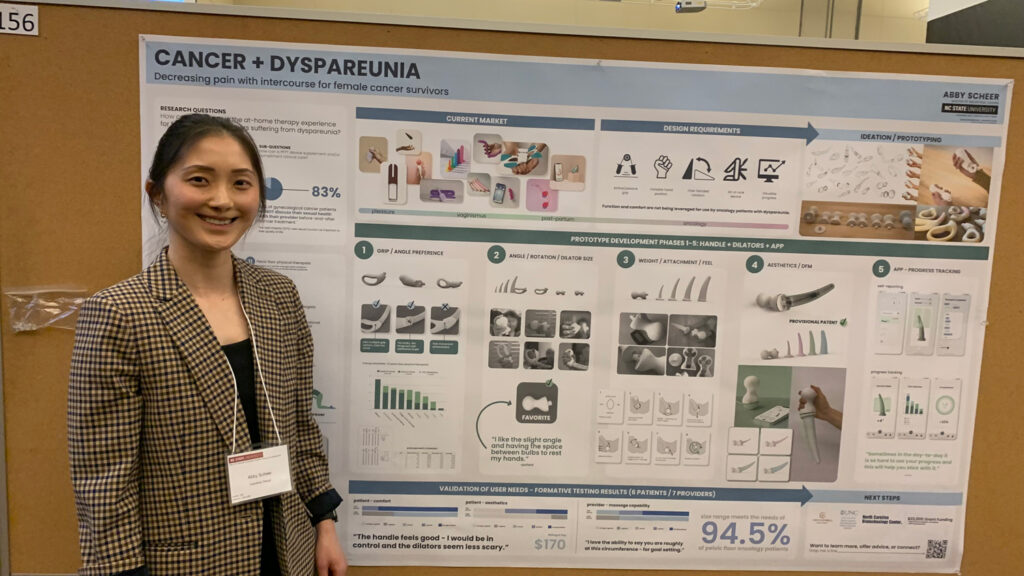
Cancer and Dyspareunia: Decreasing Pain with Intercourse for Women
Fifty percent of female cancer survivors report significant pain with intercourse (dyspareunia) that negatively impacts their personal relationships, body image and self-esteem. Dyspareunia is the result of cancer treatments such as surgery, radiation, and chemotherapy, even affecting women who have non-gynecologic cancers. Cancer survivors may struggle with dyspareunia management for the remainder of their lives. The reported barriers for women seeking dyspareunia treatment include embarrassment, privacy concerns, long commutes/wait times, the burden of numerous medical appointments, financial cost, and inadequate solutions not meeting the needs of women. Current device inadequacies include (i) targeting singular therapy needs which require patients to purchase each device individually (ii) lack of ergonomic considerations (iii) not mitigating the challenges of therapy adherence. This research investigates the current pelvic floor physical therapy experience for female cancer survivors. Device design intimately affects the available therapy modalities, ergonomics, and treatment adherence and impacts patient outcomes. The research study participants include physicians, pelvic floor physical therapists, and female cancer survivors suffering from dyspareunia. Inclusion criteria for cancer patients include cancer history, age, and experience with pelvic floor physical therapy. Interviews and surveys provide an in-depth understanding of systemic and device-related problems. Think aloud protocols have provided insights into participants’ thoughts and feelings within this sensitive subject matter. Early-stage prototypes have been shipped across the United States to participants. Both preference and A/B testing have been employed for prototype feedback throughout the design process. The preliminary design has taken therapy requirements, ergonomics, and human factors psychology into account to improve the overall patient experience. The home-based intravaginal device paired with the app improves patients’ abilities to perform and progress through their pelvic floor physical therapy and is anticipated to therefore improve clinical outcomes.
Second Place Winner: Rebecca Asser
Participant: Rebecca Asser, Wendy Moore
Graduate Programs: Landscape Architecture; Agricultural and Natural Resources Committee Chair, Lumbee Tribal Council
Advisor: Andy Fox
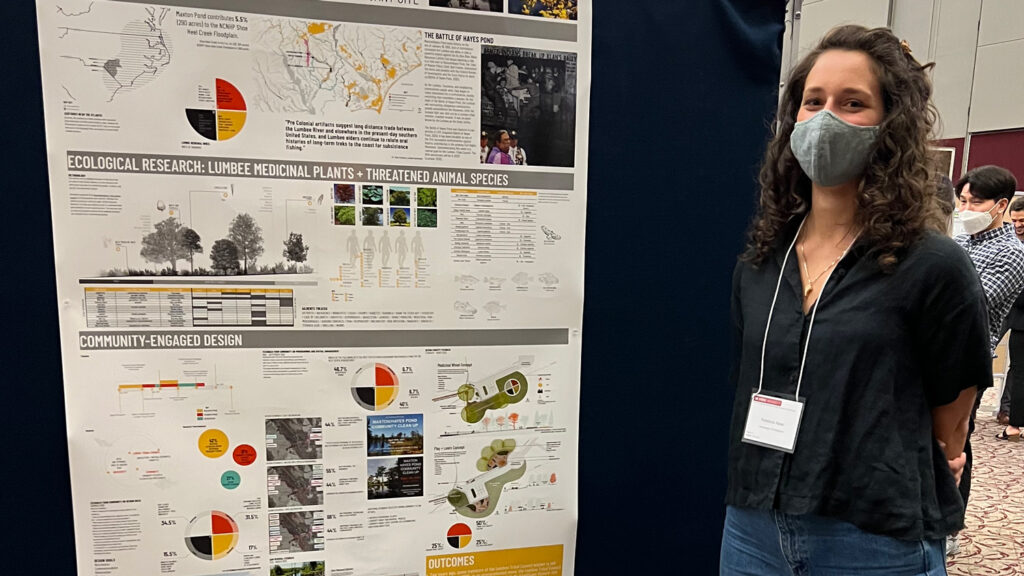
Reimaging Maxton/Hayes Pond: Collaboration and Investigation of a Lumbee Landscape
The research initiative explores landscape architecture, community engagement, and resilience as it relates to the history and sovereignty of the Lumbee people at Maxton/Hayes Pond. After Hurricane Florence broke the dam that held back Shoe Heel Creek, the 312-acre site has seen many changes, including an increase in invasive species as well as a tragic accident. As a designated North Carolina Natural Heritage Program area it was historically home to the federally endangered American Alligator and still includes many other unique plant and animal species. The Lumbee Tribal Council seeks ecologically responsible solutions to restore the site. Additionally, in January 1958, the Lumbee and other indigenous groups of the area took a stand against the KKK at The Battle of Hayes Pond. It is considered one of the first successful confrontations against white supremacy at the dawn of the Civil Rights Movement. As a culturally significant site, the Council seeks design interventions that allow community members to gather, commemorate, and enjoy the beauty and history of Maxton/Hayes Pond. In over a year of collaboration, the research project has participated in informal interviews with community members, gathered data from local Lumbee scholars, conducted rigorous ethnobotanical and ecological research, put forth surveys and preliminary feedback booklets using a design game, and engaged in community-organized Clean Up Days. This multi-pronged research project will result in a co-produced design solution that celebrates the historic and ecological significance of Maxton/Hayes Pond. The success of this endeavor is symbolic of the resilience of the Lumbee people who have encountered many storms in their existence but survive and thrive much like Mother Earth.
Third Place Winner: Lauren Burnham
Participant: Lauren Burnham
Graduate Program: Graphic Design
Advisor: Matthew Peterson
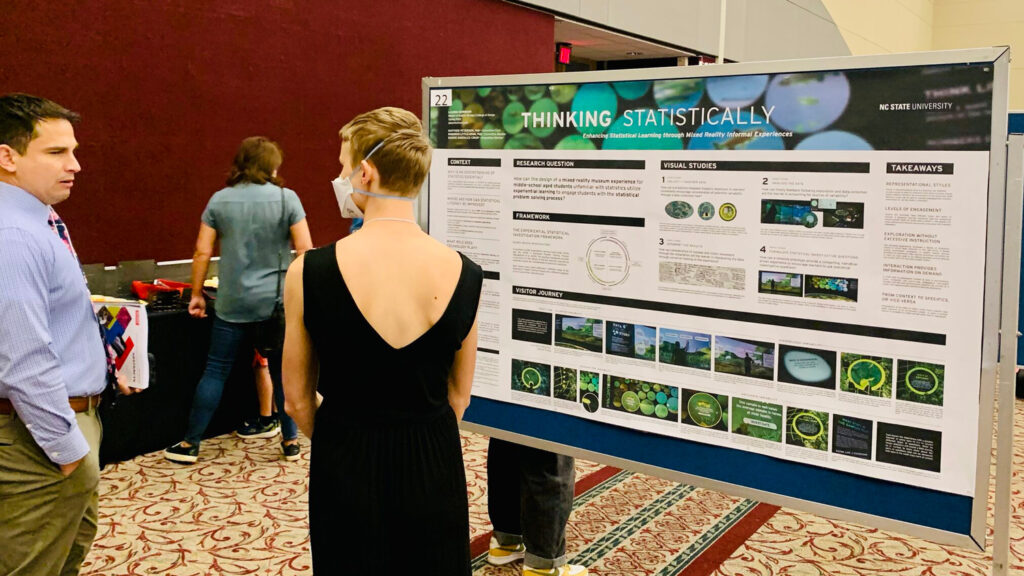
Thinking Statistically: Enhancing Statistical Learning through Mixed Reality Informal Experiences
Statistical literacy, or the ability to understand and interpret data, has become increasingly important to navigating our data-driven society. While many efforts have focused on improving formal learning experiences in statistics, research points towards informal learning outside of the classroom as a crucial component of the general public’s understanding of science and mathematics. This presents a rich opportunity to enhance statistical learning for young students through the design of compelling informal learning experiences. Drawing from the framework for statistics and data science education from the National Council of Teachers of Mathematics, this investigation explores the ways in which a mixed reality museum experience can engage middle-school-age learners with the stages of the statistical problem-solving process. The resulting studies consider how the affordances of this environment, such as movement, immersion, and learner-driven experimentation, could encourage statistical question-asking and offer supplements to traditional learning approaches. Experiences that lay a foundation of curiosity towards statistical problem solving hold the potential for enriching the learning process for students beginning to engage with the subject.
This post was originally published in College of Design Blog.

